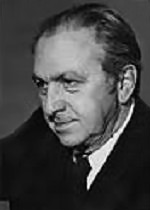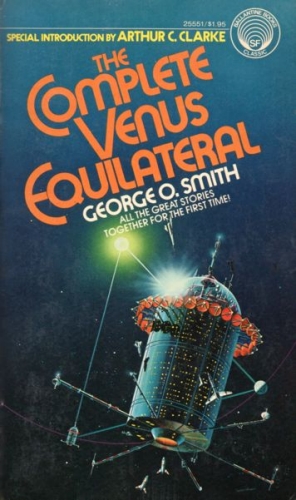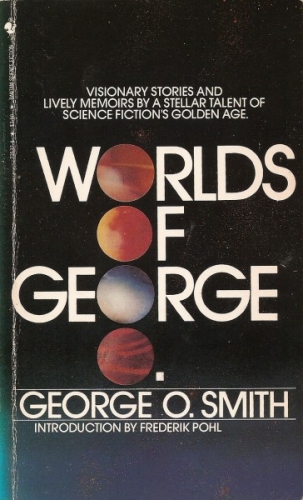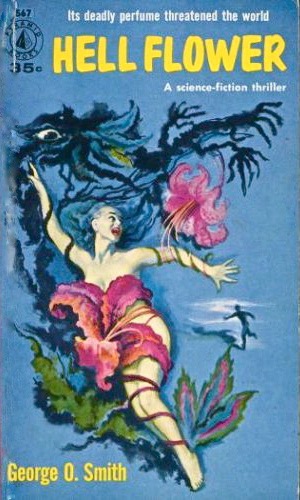The Golden Age of Science Fiction: George O. Smith

First Fandom was established in 1958 following a conversation among fans at Midwestcon who realized they had all been active in fandom for more than 20 years. The original cut-off date for membership was that individuals had to be active in fandom prior to January 1, 1938, although that timeline has been loosened up and there are now multiple classes of membership. The original chair of First Fandom, Robert A. Madle, is still alive.
The First Fandom Hall of Fame was established in 1963 to recognize contributions to science fiction as either a fan, author, artist, editor, or agent. The first inductee was E.E. “Doc” Smith. There was no inductee in 1965. Up until 1984, only one person was inducted in a given year, the exception being in 1974 when both Sam Moskowitz and Forrest J Ackerman were inducted. Following 1985, multiple annual inductees became the norm. Isaac Asimov became the first posthumous inductee in 2008, and now most year include a posthumous inductee.
In many years, the First Fandom Award has been presented at the beginning of the Hugo Award Ceremony. In 1980, the award was presented at Noreascon Two in Boston, Massachusetts on August 31 by Lester del Rey. The award was accepted on George O. Smith’s behalf by Frederik Pohl.
Born on April 9, 1911 in Chicago, Illinois, George O. Smith is best known as the author of the Venus Equilateral series and his first published short story, “QRM—Interplanetary,” which appeared in the October 1942 issue of Astounding Science-Fiction kicked off that series. The stories revolve around a satellite which is meant to act as a relay station when the sun blocks radio waves as the planets move in their orbits. Smith used the series to discuss various technical issues.
One recurring theme in Smith’s fiction is the idea that technological advances belong to the people, not to the elite. In his non-writing life, he worked as an electronics engineer, often in the research department of the companies he was employed by. He made use of his professional knowledge to write stories which would not have been out of place in magazines published by Hugo Gernsback.
Many of Smith’s stories were published by John W. Campbell, Jr. in the pages of Astounding and Smith is discussed at some length in Alec Nevala-Lee’s 2018 monograph of Campbell, Astounding: John W. Campbell, Isaac Asimov, Robert A. Heinlein, L. Ron Hubbard, and the Golden Age of Science Fiction. Campbell liked Smith and invited him to spend some weekends at his house, and eventually invited Smith to join a project Campbell was working on for the National Defense Research Committee during World War II. Smith and Campbell were also employed by a think-tank set up by Robert Heinlein to brainstorm unconventional military responses. By this time, Smith had moved in with Campbell full time for a brief period.
Smith married Helen Kunzler in 1936 and the two divorced in 1948, which included the time Smith spent living with the Campbells. While Campbell was not a drinker, his wife, Doña Stewart, enjoyed drinking socially and having Smith around gave her a drinking companion, both at home and when she went out for the evening. Eventually, Smith landed a job in Philadelphia. As John W. Campbell, Jr.’s marriage to Doña Stewart began to unravel, Smith and Stewart became an item. By the time Campbell and his wife divorced in 1950, Smith and Stewart were openly living together. Shortly after Campbell and Stewart’s divorce became final, Smith and Stewart married on August 19, 1950. Smith and Campbell remained friends and Smith spoke at Campbell’s funeral.
Smith’s career was an author essentially ended around 1960, although he published a few stories and reprints after that. Even after he stopped writing, Smith and Stewart maintained close friendships with many authors, including Heinlein. Smith was also one of the members of the Trap Door Spiders, the literary society which Isaac Asimov used as the basis of his stories about the Black Widowers. He should not be confused with author George H. Smith (1922-1996) who was active from 1953 through 1980.
Smith, who also published using the pseudonym Wesley Long, died on May 27, 1981 in Rumson, New Jersey.
First Fandom doesn’t release a list of those considered for the First Fandom Hall of Fame, so it is not known who else was considered for 1980.
 Steven H Silver is a sixteen-time Hugo Award nominee and was the publisher of the Hugo-nominated fanzine Argentus as well as the editor and publisher of ISFiC Press for 8 years. He has also edited books for DAW and NESFA Press. He began publishing short fiction in 2008 and his most recently published story is “Webinar: Web Sites” in The Tangled Web. Steven has chaired the first Midwest Construction, Windycon three times, and the SFWA Nebula Conference 6 times, as well as serving as the Event Coordinator for SFWA. He was programming chair for Chicon 2000 and Vice Chair of Chicon 7.
Steven H Silver is a sixteen-time Hugo Award nominee and was the publisher of the Hugo-nominated fanzine Argentus as well as the editor and publisher of ISFiC Press for 8 years. He has also edited books for DAW and NESFA Press. He began publishing short fiction in 2008 and his most recently published story is “Webinar: Web Sites” in The Tangled Web. Steven has chaired the first Midwest Construction, Windycon three times, and the SFWA Nebula Conference 6 times, as well as serving as the Event Coordinator for SFWA. He was programming chair for Chicon 2000 and Vice Chair of Chicon 7.



I own those first two collections, but never read them. I blame lackluster marketing. Who wants to read a series of stories about a satellite??
I’ve had The Complete Venus Equilateral since…oh, 1977 or so and never read it. This article moved it from the garage to the shelf next to my bed. One step at a time…
I liked “Highways in Hiding” and am working on a concept that incorporates G.O. Smith’s ideas about telepathy and ESP. Is there a discussion group somewhere that delves into this?